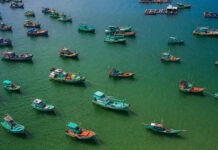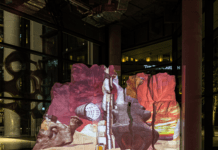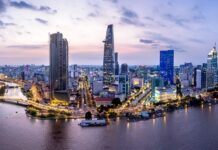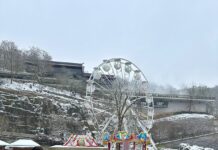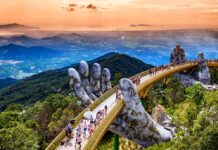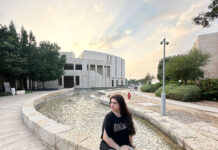Magnificent mountains, medieval towns, Gothic churches, stoic monasteries and stately castles looming over bucolic landscapes, these are only some of the fascinating scenarios that await travelers visiting Slovakia every year. This year, in particular, there is an extra exuberance in the country as the medieval city of Kosice in eastern Slovakia becomes the 2013 European Capital of Culture.
In Slovakia, you can be part of exciting activities or visit extraordinary vistas within a couple of hours drive of each other. Whether your visit UNESCO nominated World Cultural Heritage sites, explore folklore depictions and folk art displays in quaint towns and villages, hike along Carpathian Mountain ranges with their picture-postcard valleys or venture deep into caves, rejuvenate with the magic of spas or be part of a vibrant cultural life — of music, festivals, theater, opera and great cuisines — you will find it all in Slovakia.
Bratislava: One of the oldest towns in Europe, but today, one of the youngest European capitals, Bratislava is brimming with vitality as a young, more outwardly looking generation makes their presence felt across the Slovakian capital. With the Hungarian border just 16km away, the nearest Austrian town almost visible from the city and Vienna’s international airport just over half an hour’s drive from the city center, Bratislava is ideally located for visitors seeking less pricier boarding and lodging options while visiting many destinations in Austria and Hungary. Beautiful monuments in the old town area are witness of the city’s past under Austro- Hungarian rule. The old town, the 11th century Gothic cathedral and the castle overlooking the city are must visit location in the city. With almost a thousand years of wine-making tradition, the vineyards of Bratislava that rise from the banks of the River Danube to cover the mountain slopes are also worth a visit.
Kosice: Along with Marseille in France, the metropolis of Kosice has been selected as the 2013 European Capital of Culture. A slew of cultural activities are planned throughout the year and along the city’s pedestrian-only main square and other vehicle-free areas one can lazily saunter along absorbing the culture of its quaint alleys, or drop by the dozens of sidewalk cafes and restaurants to enjoy gastronomic fare and scenic settings, far from the traffic, noise, pollution and tourist crowds that have become endemic in many other European cities. Many historical and cultural sites are being redeveloped for the European City of Culture events, including a planned Kunsthalle, or art gallery, in a former swimming pool and various locations around the historical city centre. One can also witness the oldest marathon in Europe, the Kosice Peace Marathon, held every year on the city’s streets on the first Sunday in October.
Bojnice Castle: One of the most visited and attractive castles in Central Europe, the fairy-tale Bojnice Castle that overlooks the town of Bojnice, is set against idyllic backgrounds on the edge of the Strazovske vrchy Mountains. A museum within the castle houses numerous artifacts and works of art, including the painting ‘Bojnice Altar’ by a 14th century Florentine artist. A tour of the castle is made all the more interesting through a visit to its underground cave, linked to the castle through a 26m deep well. The Stone-Age cave with its two lakes served as shelter and source of water for the castles inhabitants during attacks by marauding tribes.
Trencin: Located in western Slovakia, Trencin, with its central square dominated by the presence of the overhanging castle nearby, is one of the most picturesque towns in the country. The strategic location of the 11th century castle, considered one of the most significant in Slovakia, and the presence of a strong Roman encampment below it, as evidenced by inscriptions on the rock face, are reminders of the once powerful role that Trencin played in the history of the region. Today, just a few minutes from the town center, the spa town of Trencianske Teplice, at one time the Austro-Hungarian Empire’s most famous spa, still thrives and continues to draw visitors for its hot mineral springs and muds with medicinal properties.
Banska Bystrica: Certainly one of the Slovakian cities with the richest architecture, the center of Banska Bystrica features among a host of monuments and buildings the Clock Tower, which like the more famous Tower of Pisa, leans to one side. Also in the city center is the SNP Museum which commemorates the resistance to Nazi occupation and oppression. The center of the city is exceptional. Among the many monuments and buildings (it would be impossible to present a complete list here) is the Clock Tower which, like the Tower of Pisa, leans; The city houses several art galleries and museums, including the SNP Museum which commemorates the resistance to Nazi oppression. Slovak Paradise National Park: With more than 300km of marked hiking trails, the 140sq km Slovak Paradise Park is a protected nature reserve of verdant forests, broad meadows, plateaus, canyons, gorges and more than 350 underground caves. Having a huge variety of natural wonders the national park features the White Valley with its notable waterfalls, the Lost Valley with its Dobsinka Ice Cave with over 120,000 cubic meters of permanent ice etched into icefalls and ice stalagmites and other monumental glaciations. The park also features several impressive valleys and ravines bedecked with geomorphological shapes. Spas: For centuries the curative waters and medicinal properties of its mud baths have attracted visitors to the many spas that abound in Slovakia. The spas with their waters heavy in therapeutic minerals, the thermal springs and the sparkling spring waters, welcome guests arriving for treatment, rejuvenation or for simple relaxation in a lovely environment. Specialized treatments are available for orthopedic, rheumatic, cardiovascular, respiratory, renal and skin disorders among others.
High Tatras National Park: Located in northern Slovakia, the High Tatras are famed for their skiing in winter and hiking in summer. The only Alpine mountain in the entire Carpathian Mountain range, the High Tatras, feature towering peaks, smooth slopes and turquoise glacier lakes and is home to most of the ski resorts in Slovakia. After an arduous day of hiking to mountain tops for a breathtaking view of the vista below, or following a hectic bout of skiing on cold mountain slopes, there is no better way to draw down the day than by unwinding in one of the numerous thermal waters under an open sky.
Low Tatras National Park: Lying adjacent to the domineering slopes of the High Tatras, the Low Tatras National Park feature dense forests, garrulous waterfalls and spectacular views and over 840km of hiking trails. The main ridge on top on the Low Tatras has a hiking trail that starts at Donovaly and covers more than 80km to finish at Certovica; this is a challenging trail that takes all of five days to complete. But for those with persistence and stamina, the views along the way more than make up for the arduous trail. Slovakia Rich cultural heritage in a diverse landscape


